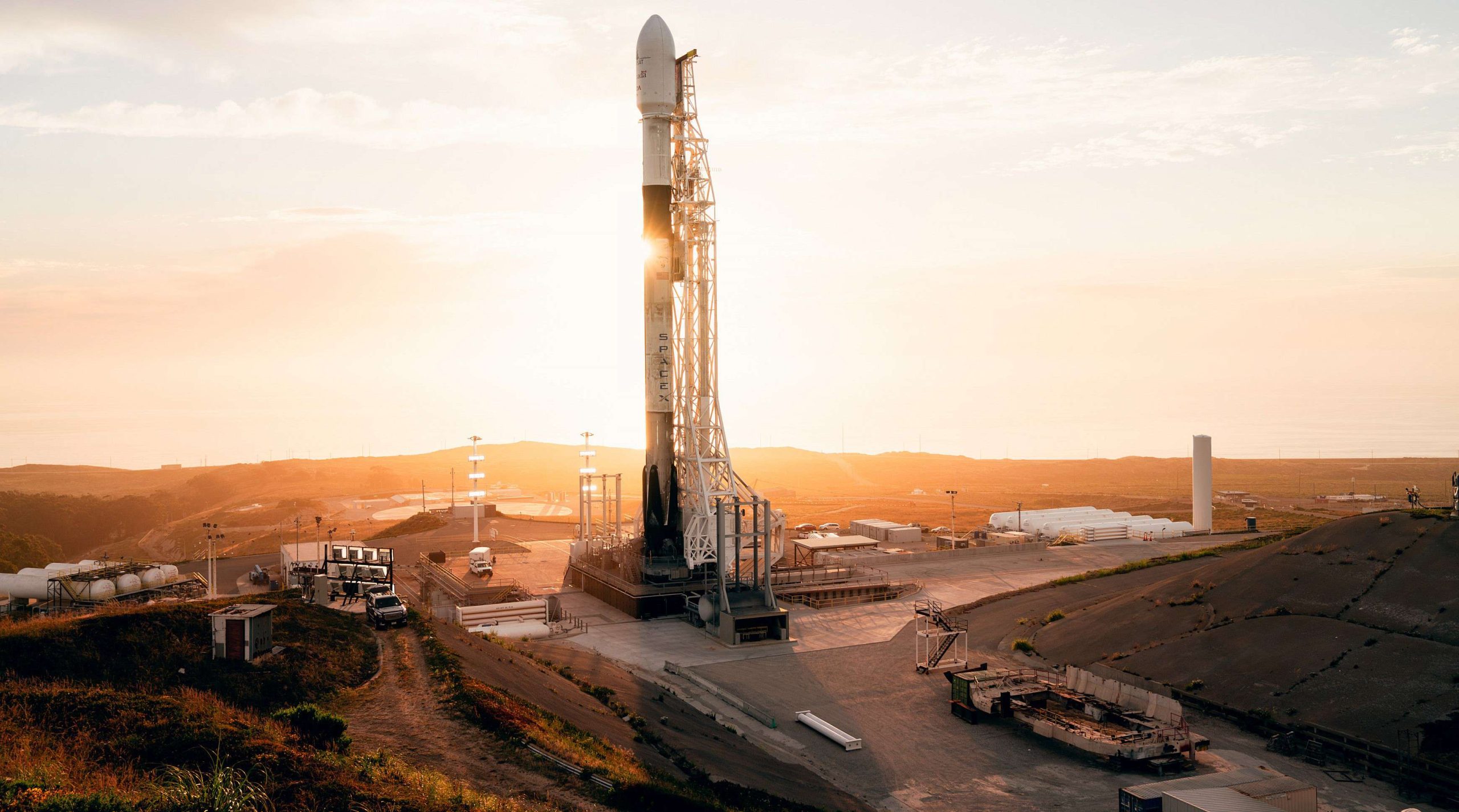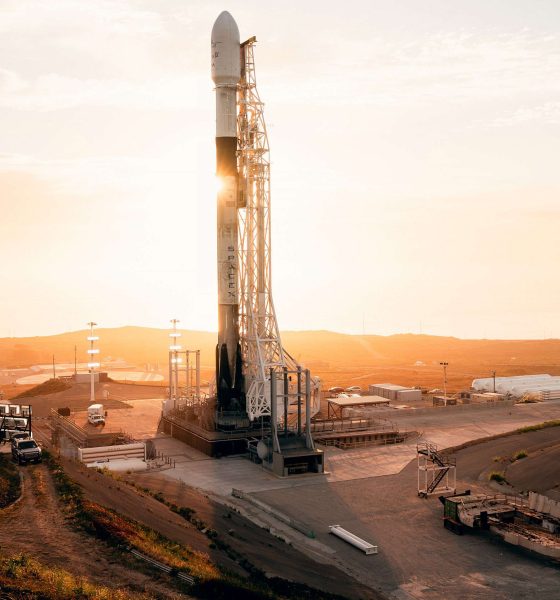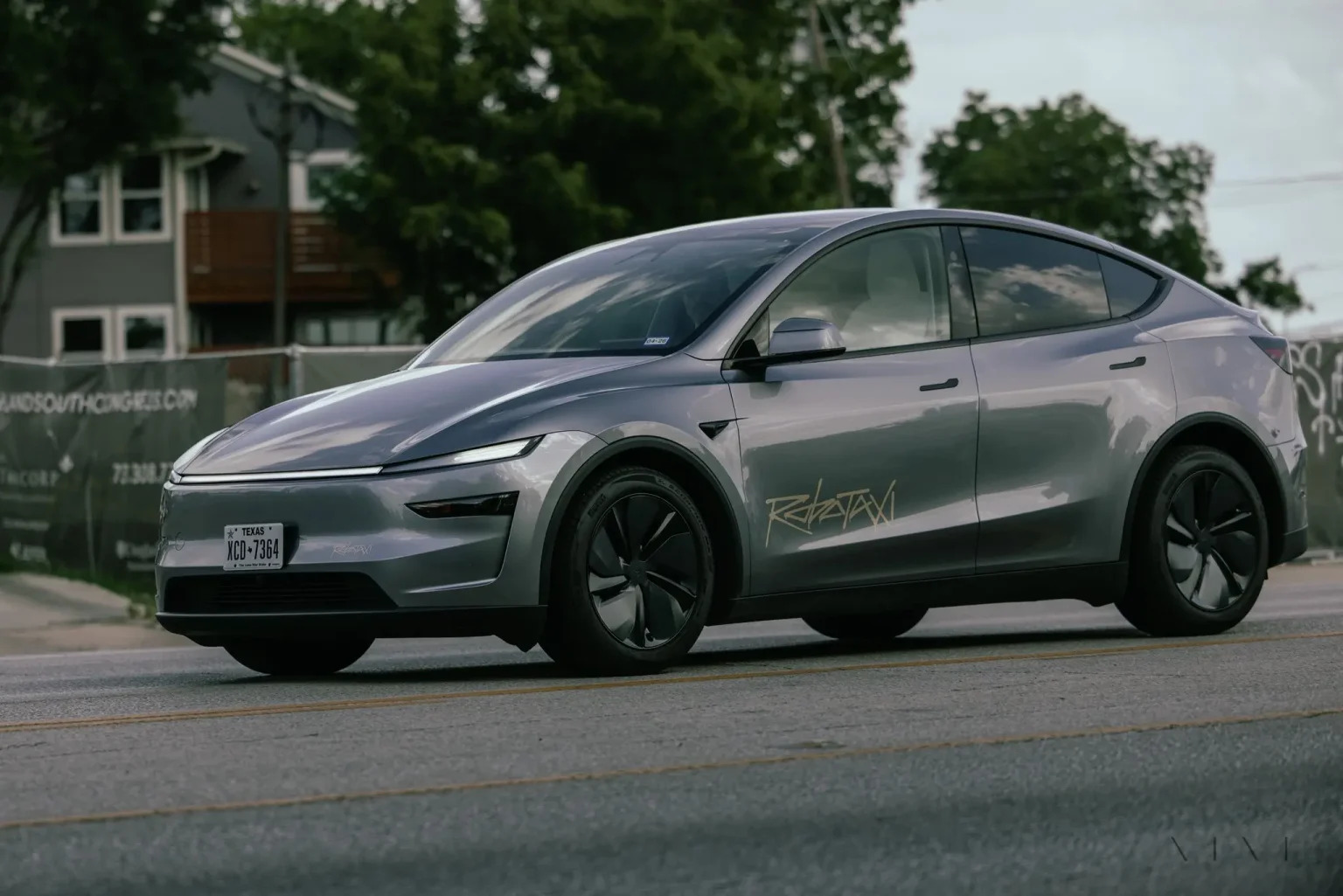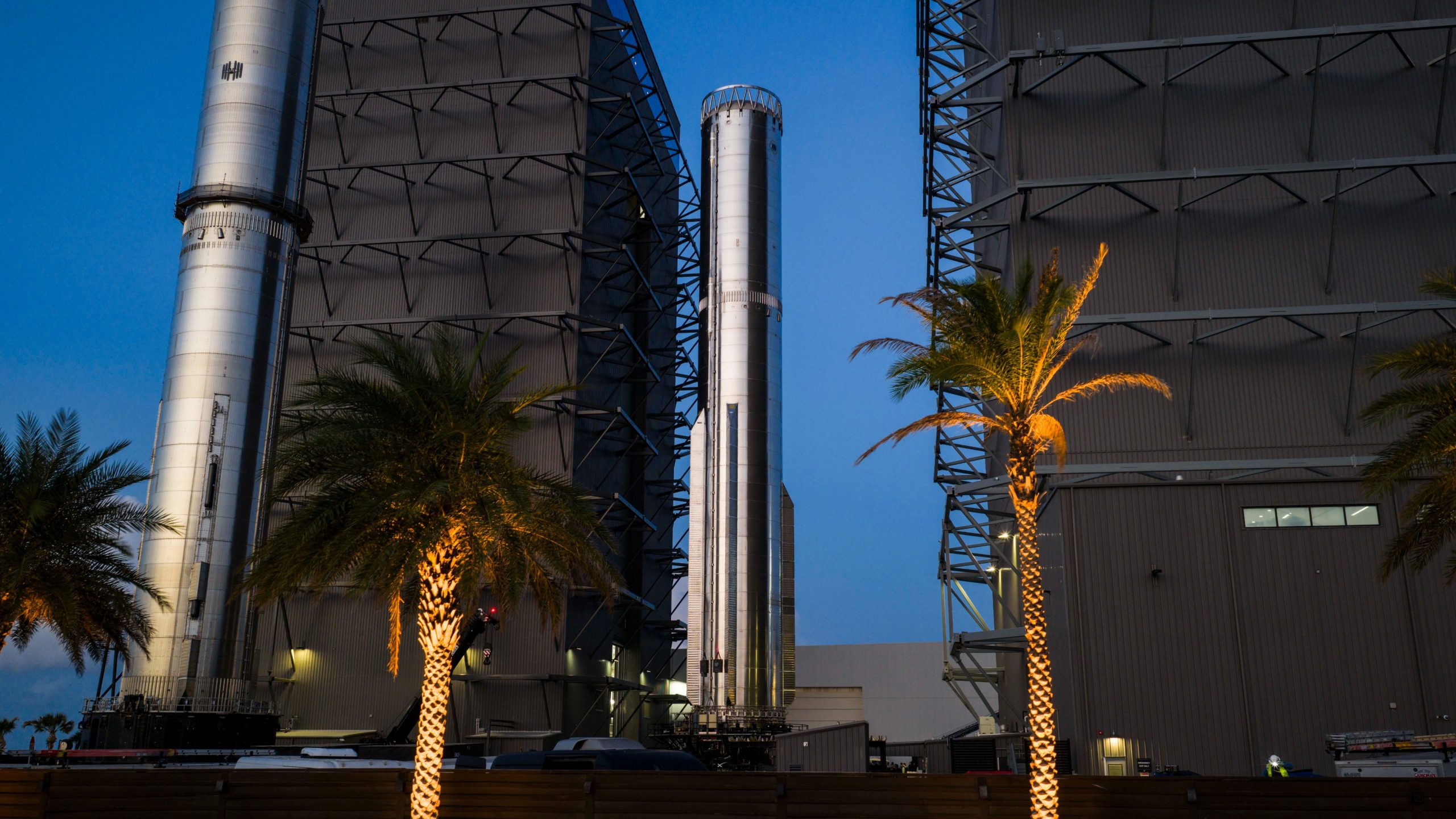

News
SpaceX awarded double-satellite Falcon 9 launch contract, sixth win of 2019
SpaceX continues to reap the benefits of strong market demand for Falcon 9’s combination of affordability and performance with an announcement that the company has won its sixth launch contract in 2019.
Announced on July 3rd by Space Norway and several other stakeholders, a SpaceX Falcon 9 is scheduled to launch an identical pair of communications satellites to an unusual orbit no earlier than late 2022. Northrop Grumman will build both ~2000-kilogram (4400 lb) spacecraft.
Known officially as the Arctic Satellite Broadband Mission (ASBM), Space Norway has partnered with satellite operator Inmarsat and the Norwegian Ministry of Defense to provide connectivity to civilian and military users in and around the Arctic. Additionally, the US Air Force will have its own communications payloads on both satellites, rounding out the extremely busy mission.
The two ASBM satellites will be built around the GEOStar-3 bus, originally introduced by Orbital Sciences Corporation (acquired by Alliant Techsystems to become Orbital ATK, then acquired by Northrop Grumman to become Northrop Grumman Innovation Systems). Each satellite will produce 6 kW via solar arrays, while the GEOStar-3 bus can support all-chemical propulsion, all-electric propulsion, or a hybrid approach. Falcon 9’s 2022 launch of ASBM will mark the first time that GEOSat-3 satellites have utilized their stacking capability, with both spacecraft heading to orbit on the same rocket.

Perhaps the most unique aspect of the ASBM mission is the extremely unusual orbit Falcon 9 will be launching them to. According to info published by Space Norway on June 24th, they will be targeting a final orbit roughly comparable to the Molniya orbits originally used by Soviet Union military communications satellites as early as the mid-1960s. ASBM’s orbits will also be highly elliptical and approximately polar, with an apogee of 43,000 km (26,700 mi) and a perigee of 8000 km (5000 mi). Traditionally, Molniya orbits had much lower perigees, but the higher perigee of ASBM satellites should allow them to operate indefinitely without having to worry about atmospheric drag lowering their orbits.
The ASBM satellites will reach their perigee somewhere over Antarctica and will generally power down their communications hardware until they are back over the Arctic. By having two satellites, the other satellite will be able to guarantee continuous coverage while its twin is out of contact.

With an overall payload weight around 4000 kg (8800 lb), it’s likely that Falcon 9 has the performance necessary to place the spacecraft in a transfer orbit (likely ~300 km by 43,000 km) and safely land on a SpaceX drone ship, in which case the satellites would raise their perigees themselves. It’s unlikely that a recoverable Falcon 9 launch has enough performance to send the satellites directly to their final orbits, although an expendable mission might be able to do it.
Regardless, this launch contract is yet another sign that SpaceX will continue to have strong demand for Falcon 9 launch services in the coming years. ASBM is the sixth win for SpaceX just in the last four or so months, beginning in February with three US military contracts, followed by a NASA contract in April and a Korean mission in June.
Check out Teslarati’s Marketplace! We offer Tesla accessories, including for the Tesla Cybertruck and Tesla Model 3.

Elon Musk
SpaceX issues statement on Starship V3 Booster 18 anomaly
The incident unfolded during gas-system pressure testing at the company’s Massey facility in Starbase, Texas.

SpaceX has issued an initial statement about Starship Booster 18’s anomaly early Friday. The incident unfolded during gas-system pressure testing at the company’s Massey facility in Starbase, Texas.
SpaceX’s initial comment
As per SpaceX in a post on its official account on social media platform X, Booster 18 was undergoing gas system pressure tests when the anomaly happened. Despite the nature of the incident, the company emphasized that no propellant was loaded, no engines were installed, and personnel were kept at a safe distance from the booster, resulting in zero injuries.
“Booster 18 suffered an anomaly during gas system pressure testing that we were conducting in advance of structural proof testing. No propellant was on the vehicle, and engines were not yet installed. The teams need time to investigate before we are confident of the cause. No one was injured as we maintain a safe distance for personnel during this type of testing. The site remains clear and we are working plans to safely reenter the site,” SpaceX wrote in its post on X.
Incident and aftermath
Livestream footage from LabPadre showed Booster 18’s lower half crumpling around the liquid oxygen tank area at approximately 4:04 a.m. CT. Subsequent images posted by on-site observers revealed extensive deformation across the booster’s lower structure. Needless to say, spaceflight observers have noted that Booster 18 would likely be a complete loss due to its anomaly.
Booster 18 had rolled out only a day earlier and was one of the first vehicles in the Starship V3 program. The V3 series incorporates structural reinforcements and reliability upgrades intended to prepare Starship for rapid-reuse testing and eventual tower-catch operations. Elon Musk has been optimistic about Starship V3, previously noting on X that the spacecraft might be able to complete initial missions to Mars.
Investor's Corner
Tesla analyst maintains $500 PT, says FSD drives better than humans now
The team also met with Tesla leaders for more than an hour to discuss autonomy, chip development, and upcoming deployment plans.

Tesla (NASDAQ:TSLA) received fresh support from Piper Sandler this week after analysts toured the Fremont Factory and tested the company’s latest Full Self-Driving software. The firm reaffirmed its $500 price target, stating that FSD V14 delivered a notably smooth robotaxi demonstration and may already perform at levels comparable to, if not better than, average human drivers.
The team also met with Tesla leaders for more than an hour to discuss autonomy, chip development, and upcoming deployment plans.
Analysts highlight autonomy progress
During more than 75 minutes of focused discussions, analysts reportedly focused on FSD v14’s updates. Piper Sandler’s team pointed to meaningful strides in perception, object handling, and overall ride smoothness during the robotaxi demo.
The visit also included discussions on updates to Tesla’s in-house chip initiatives, its Optimus program, and the growth of the company’s battery storage business. Analysts noted that Tesla continues refining cost structures and capital expenditure expectations, which are key elements in future margin recovery, as noted in a Yahoo Finance report.
Analyst Alexander Potter noted that “we think FSD is a truly impressive product that is (probably) already better at driving than the average American.” This conclusion was strengthened by what he described as a “flawless robotaxi ride to the hotel.”
Street targets diverge on TSLA
While Piper Sandler stands by its $500 target, it is not the highest estimate on the Street. Wedbush, for one, has a $600 per share price target for TSLA stock.
Other institutions have also weighed in on TSLA stock as of late. HSBC reiterated a Reduce rating with a $131 target, citing a gap between earnings fundamentals and the company’s market value. By contrast, TD Cowen maintained a Buy rating and a $509 target, pointing to strong autonomous driving demonstrations in Austin and the pace of software-driven improvements.
Stifel analysts also lifted their price target for Tesla to $508 per share over the company’s ongoing robotaxi and FSD programs.
Elon Musk
SpaceX Starship Version 3 booster crumples in early testing
Photos of the incident’s aftermath suggest that Booster 18 will likely be retired.

SpaceX’s new Starship first-stage booster, Booster 18, suffered major damage early Friday during its first round of testing in Starbase, Texas, just one day after rolling out of the factory.
Based on videos of the incident, the lower section of the rocket booster appeared to crumple during a pressurization test. Photos of the incident’s aftermath suggest that Booster 18 will likely be retired.
Booster test failure
SpaceX began structural and propellant-system verification tests on Booster 18 Thursday night at the Massey’s Test Site, only a few miles from Starbase’s production facilities, as noted in an Ars Technica report. At 4:04 a.m. CT on Friday, a livestream from LabPadre Space captured the booster’s lower half experiencing a sudden destructive event around its liquid oxygen tank section. Post-incident images, shared on X by @StarshipGazer, showed notable deformation in the booster’s lower structure.
Neither SpaceX nor Elon Musk had commented as of Friday morning, but the vehicle’s condition suggests it is likely a complete loss. This is quite unfortunate, as Booster 18 is already part of the Starship V3 program, which includes design fixes and upgrades intended to improve reliability. While SpaceX maintains a rather rapid Starship production line in Starbase, Booster 18 was generally expected to validate the improvements implemented in the V3 program.
Tight deadlines
SpaceX needs Starship boosters and upper stages to begin demonstrating rapid reuse, tower catches, and early operational Starlink missions over the next two years. More critically, NASA’s Artemis program depends on an on-orbit refueling test in the second half of 2026, a requirement for the vehicle’s expected crewed lunar landing around 2028.
While SpaceX is known for diagnosing failures quickly and returning to testing at unmatched speed, losing the newest-generation booster at the very start of its campaign highlights the immense challenge involved in scaling Starship into a reliable, high-cadence launch system. SpaceX, however, is known for getting things done quickly, so it would not be a surprise if the company manages to figure out what happened to Booster 18 in the near future.








